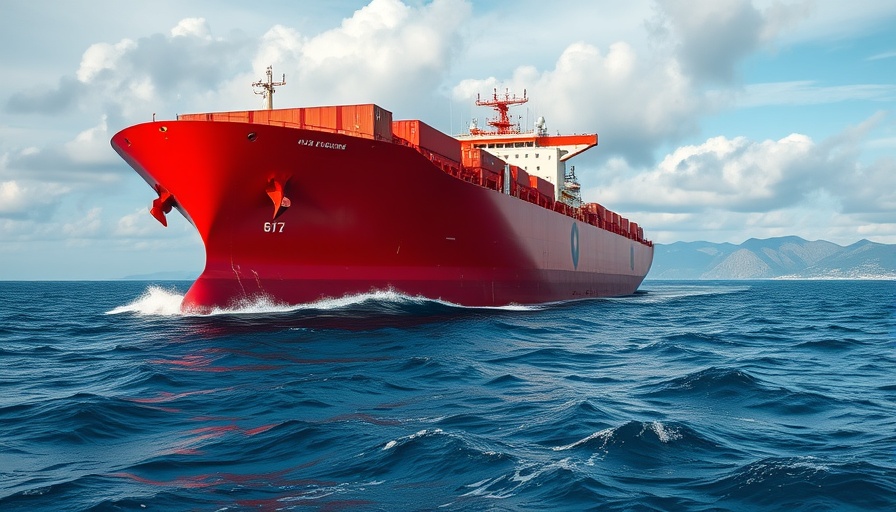
Innovative Approach to Reduce CO2 Emissions
The UBC Cork has embarked on an experimental, yet groundbreaking journey aimed at combating climate change. This cargo ship is the first in the world to use an onboard carbon capture system, developed by the UK startup Seabound. With the potential to revolutionize maritime industries, the innovative technology captures carbon dioxide emitted by the ship's engines and transforms it into green cement, a building material that can significantly lower carbon footprints in construction.
How Does Carbon Capture Work?
The process involves funneling exhaust gases into a high-pressure chamber containing calcium hydroxide pebbles, which react with the CO2 to form a carbon mineral called calcium carbonate. Eventually, this material can be processed into cement, providing a sustainable alternative to traditional options.
Beyond the Table: The Future of Shipping Technology
Seabound's CEO, Alisha Frediksson, envisions scaling this technology across hundreds, if not thousands, of vessels, tackling one of the largest sources of greenhouse gas emissions. "Onboard carbon capture is no longer just a concept," Frediksson emphasized. As the technology matures, it invites broader conversations about sustainability practices in shipping—an industry that accounts for approximately 2.5% of global CO2 emissions.
Impacts on the Construction Industry
Transitioning to green cement has implications beyond marine transport. The construction industry is under increasing pressure to adopt sustainable practices in response to climate change. Using captured CO2 to produce building materials not only decreases carbon emissions but also substitutes for conventional cement manufacturing, which is notorious for its significant pollution levels.
Challenges and Opportunities Ahead
Although the initiative is promising, challenges remain. The efficiency of the carbon capture technology must improve, and infrastructure for utilizing the produced cement must be established. However, with ongoing investments in research and development, not to mention rising awareness around environmental issues, the shift towards innovative technologies like those from Seabound could pave the way for a greener future.
Final Thoughts
The UBC Cork is leading the charge in shipping toward more sustainable operations, creating a viable path for future vessels. More than just a ship, it symbolizes a necessary shift in mindset. By implementing effective carbon capture technologies, we can make significant strides in reducing our overall carbon footprint, demonstrating that industry can be at the forefront of climate solutions.
 Add Row
Add Row  Add
Add 




Write A Comment